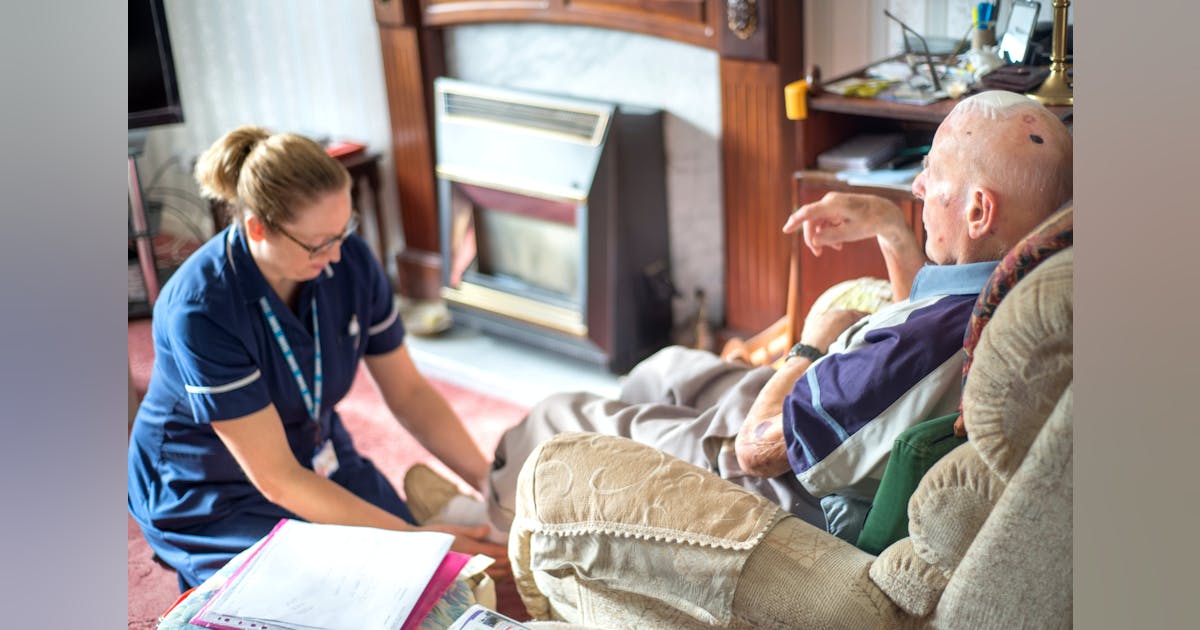
During a recent webinar hosted by Hospital at Home Users Group, executives from three health systems described their experience creating home rehabilitation/skilled nursing facility (SNF) programs as complements to their hospital at home offerings .
As the webinar hosts noted, there is interest in this model from several perspectives: patients prefer to be at home and avoid long stays in the SNF; Health systems often have to wait to transition patients to SNFs, which impacts length of stay; and health plans pay significant amounts for care at the SNF level.
Emily Downing, MD, system clinical director at Allina Health, coined a Dr. Seuss-like term, “Snospital at Home,” to describe what Allina has done to fill the gap between acute care and SNF care.
Allina Health has approximately 1,600 hospital beds throughout the Minneapolis metropolitan area. This program was started in 2020 in response to COVID. To date, Allina has treated 5,200 patients within this care model. An example of the type of patient in this program is someone who is receiving chemotherapy and does not qualify for a SNF but still has fairly significant medical management needs. “Typically, the model episode lasts about four and a half days, and most patients (about 70 percent) continue with some level of home health care, skilled nursing, and potentially therapy at the time of discharge,” Downing said.
Allina’s care model consists of a community paramedic transition visit including biometric setup, with 24/7 monitoring, typically twice a day at a minimum, and then synchronous management alerts, and daily visits from a community nurse or paramedic for the first three days of the episode. They can continue daily, in addition to urgent visits from those same providers as needed daily for urgent visits to teleproviders and urgent visits to health providers, 24/7 centralized nursing and provider coverage, and then all ancillary services: DME, oxygen, laboratory, imaging, respiratory therapy as needed, pharmacy support, physical therapy, occupational speech and social work.
The program at Allina was created with the goal of discharging patients earlier from the hospital and being able to meet more complex medical needs. “We really focused on the need for medical complexity in skilled nursing facility care as our primary gap to fill in the face of large rehabilitative care needs,” Downing said.
Home Rehab in Ohio
Cleveland Clinic created a program called Home Care Plus in 2019 with the goal of creating a safe, at-home alternative to skilled nursing facility care for a subset of patients who traditionally attend SNFs with a focus on post-acute rehabilitative care. “Our Home Care Plus program was really designed in some ways to mimic elements of care that patients would receive in a skilled nursing facility, but at home,” said Jessica Hohman, MD, president and chief medical officer of Cleveland Clinic Medicare Accountable Care. . She is an organization and researcher at her Value-Based Care Research Center.
“In reality, our program initially handled more intensive contact between provider and patient during the first 14 days, averaging about five hours per day of total patient contact time spread across service lines,” Hohman added. “To accomplish this, we partner with our in-house owned home health agency to provide all qualified services. “That included our home care nurses, physical therapists, occupational therapists and social workers when needed.”
They also hired an outside provider to provide additional comprehensive or custodial care, essentially private homework aids. for these patients. “We recognize that often a huge barrier to bringing patients home is the ability to provide that additional foster care, that non-specialist care, and we provide up to three hours a day of that for the first 14 days of a longer period. intensity. ,” she said.
“We also wanted to create more flexibility in terms of medical support, and we took advantage of excess capacity in our home primary care group to be able to adapt to the home as needed and be able to offer visits to these patients,” Hohman said.
To make it easier for the inpatient team to identify patients who were eligible, Cleveland Clinic developed an internal report that is published daily and delivered first thing in the morning to all hospital care teams. Identifies patients who meet the criteria and are currently on the census. The goal is to make it as easy as possible to identify patients who would meet those eligibility criteria so we can address them every day.
To begin this program, Cleveland Clinic selected a regional hospital that has an unusually high volume of skilled nursing facility utilization. They completed multiple cycles of education and process workflow mapping to get this program up and running. “From there, we extend this program to our other regional centers in our Northeast Ohio footprint, while also contracting with that third-party provider and all of their offices to cover our entire geographic footprint,” Hohman explained. “To get buy-in for this, we started engaging patients directly using our patient portal, as well as communicating across the hospital to let patients know that this was an option they could start requesting as an option as well. way to start driving patient participation with this program.”
Joint Venture at Marshfield Clinic
Wisconsin-based Marshfield Clinic Health System’s home recovery care program is a joint initiative between Marshfield Clinic and a company called Contessa that provides comprehensive in-home care. The program provides high acuity inpatient level care and home SNF level care for patients at a reduced cost. “We started our program with our acute models in 2016, and in September 2019 we started with a SNF/home rehabilitation model,” said Swetha Gudibanda, MD, medical director of the Hospital at Home/Home Recovery Care program.
Gudibanda described four different models: a direct-to-home model where they admit patients directly from the emergency room and clinics; a high-acuity pathway model in which patients are admitted to the hospital one day and then brought in the next day. They have a complete home hospitalization model where they transfer the patient home to complete the hospitalization and the last one is the SNF at home model.
The foundation of their program is the multidisciplinary care team that provides comprehensive care in the home. They have medical providers, critical care registered nurses, recovery care coordinators, virtual care coordinators who are registered nurses by training. They have CNAs, personal care coordinators, physicists, occupational speech, social workers and we have pharmacy services as well as transportation services.
Gudibanda said this program helps hospitals reduce length of stay, which can be prolonged while they wait for beds to open in nursing homes, especially in rural communities. “With our program, we easily transport them home and then care for them at home.”
Additionally, he said, they have saved 15 to 30 percent per bundled payment episode, decreased readmission rates and increased patient satisfaction rates.
What about payment models?
Moderator David Levine, MD, MPH, clinical director of research and development at Mass General Brigham, asked how the models are paid for and the perceived return on investment.
“This program was initially designed for our ACO and essentially our value-based patient population because that’s where the incentives align most,” Cleveland Clinic’s Hohman said. “The ACO was the test kitchen. We used shared savings to pay for private aid for these patients because they were non-reimbursable. All of our anticipated specialty care was created and reimbursed as part of in-home specialty care. Our goal as an organization was to break even on the intermittent home care scale. And that’s one of the luxuries of the fact that we have our own home care agency and we had a desire to partner as an organization to advance higher intensity services and really design something that would work, knowing that by doing so we could substantially reduce our utilization rates. of SNF. Because we are in the full cost of care contracts, on the back end, it has allowed us to generate revenue in terms of shared savings.”
Downing noted that Allina’s primary goal was capacity building and performance, especially during a time of limited SNF access. “So getting these patients out of the hospital and especially when there’s an opportunity to utilize hospital capacity, like during the pandemic and even now, is a big part of the value proposition.”
Gudibanda said Marshfield’s biggest advantage is that it has its own health plan. “We got the combined payment contracted through the joint venture. “We are working with other payers to do the same.”






